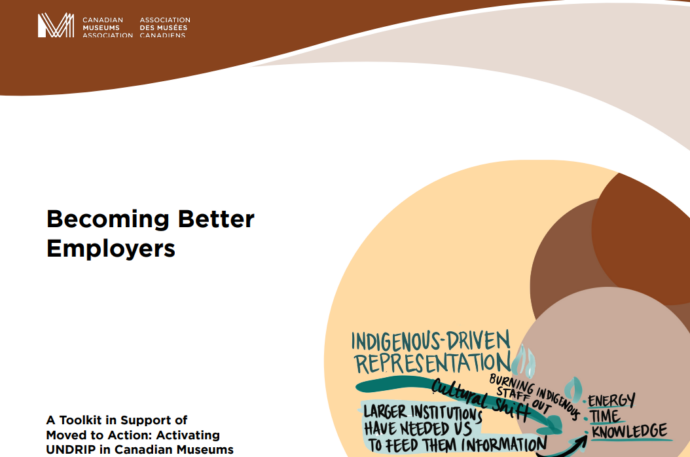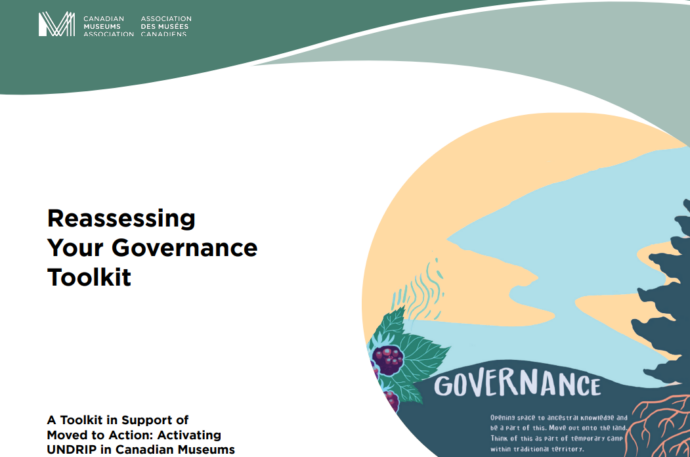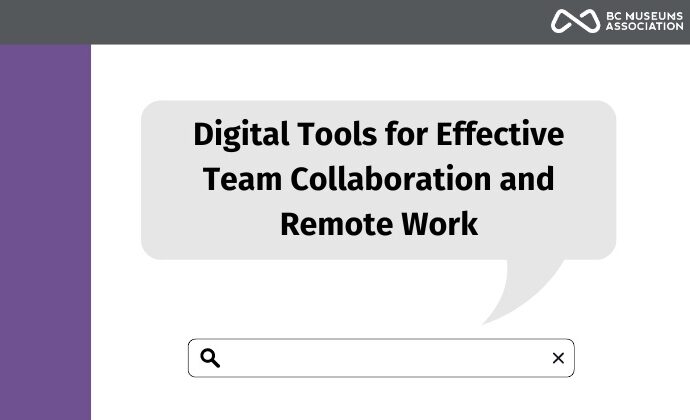Equity in the Workplace
Ways to Support Equity that Go Beyond Salary
Fair pay and decent work are essential to supporting an equitable workplace but many arts, culture, and heritage organizations that rely on grant funding have limited ability to significantly raise salaries and compensation. Even when wage increases are not an option, employers can still improve staff’s working conditions and quality of life.
From flexible working schedules, to group benefits plans, to sharing authority, here are suggestions you can use to support a more equitable workplace today.
Navigation
What does “equity” mean?
The Canada Council for the Arts offers a helpful definition: “Equity is a principle and process that promotes fair conditions for all persons to fully participate in society. It recognizes that while all people have the right to be treated equally, not all experience equal access to resources, opportunities or benefits. Achieving equality does not necessarily mean treating individuals or groups in the same way, but may require the use of specific measures to ensure fairness.”
Equity in the workplace can take many different forms. It can include ensuring that a more diverse pool of employees can grow and advance in your organization, leading to stronger representation in your organization’s future leadership. It can include sharing power so more people are included in decision-making. It can include reviewing your workplace’s policies and procedures through a critical lens to assess if they exclude certain groups of people. Increasing equity in your workplace is an investment in your employees and can lead to better employee retention, engagement, and trust. People like working for places that want to invest in them.
This investment can take many forms so if you don’t have the funds, investing care and time can still make your workplace more equitable.
“Time is Money”
The saying “time is money” is especially true for small arts, culture, and heritage organizations that are often run by part-time or volunteer staff. While the following strategies may not add new line items to your budget, we recognize that they still require the time and energy of your team. However, investing in workplace equity initiatives is shown to make teams happier, more engaged, and productive and with so many cultural organizations struggling to find and retain staff and board members, we hope that you see this as an investment worth making.
Policy Review
Flexible policies and practices are instrumental in supporting equity in the workplace by acknowledging and accommodating the diverse needs and responsibilities of employees. These policies can increase staff retention but also improve diversity and attract individuals who need or desire flexible workplaces. Employers can implement a range of policies and practices that promote work-life balance, enable employees to manage their personal and professional lives effectively, and create an inclusive work environment. Please note that in many areas legally required minimum standards are insufficient to support meaningful action in your workplace, so we encourage employers to view legal requirements as the floor, not the ceiling for equity in the workplace.
Here are some examples of policies you can implement to support workplace equity:
The Canadian Museums Association’s recent Moved to Action report and resources also offer a variety of UNDRIP-informed strategies for making your organization’s policies more equitable in a meaningful way. We especially recommend the following two resources:

Becoming Better Employers
This quick reference guide moves through a series of tools and resources ordered to sequentially bring users through personal and institutional reflections, learning, and analysis, ending with specific recommended resources to assist in the practical application of the recommendations and standards in the Moved to Action report.

Reassessing Your Governance Toolkit
This self-serve facilitated discussion is a guide for museum governance bodies to develop a strategy to actively and meaningfully support Indigenous-led governance in museums.
Reimagine Work Hours
Flexible Work Hours
Organizations can offer flexible work hours that allow employees to customize their schedules to meet their professional and personal needs. For example, employees may have the option to start and end their workdays at different times throughout the pay period to accommodate appointments, care-giving responsibilities, second jobs, or education. Flexible work hours can enhance employee well-being, reduce stress, and increase productivity by providing autonomy over work schedules. They communicate trust between organizations and their employees. Flexible work hours also offer employees the ability to craft a work schedule that accommodates disabilities, mental health needs, and chronic illness. To balance operational needs and flexible schedules, consider implementing core hours: a chunk of time where all team members are working and available for team meetings or collaborative work.
Compressed work week
Similar to flexible work hours, organizations that offer compressed work weeks improve retention, attract talented employees, increase productivity and advance equity. The Vancouver Foundation, piloted a 4-day work week and their office has not been open on Fridays since March 2023. The pilot program was slated to run until September 2023.
As covered above, compressed work weeks can aid in addressing and preventing burnout, resulting in a healthier team and organization. Compressed work weeks also address equity within the workplace; not only does this model accommodate staff with disabilities, mental health conditions, and chronic illnesses but it also addresses care-giving commitments as cited by non-profit advocacy group 4 Day Work Week Canada.

Productivity is an often cited concern when considering compressed work weeks, however Parkinson’s Law observes “that the duration of public administration, bureaucracy, and officialdom expands to fill its allotted time span, regardless of the amount of work to be done.” Studies have shown that 4-day work weeks can increase productivity as well as employee well-being. Compressed work weeks may not work year-round for your organization but seasonal schedules might, as demonstrated by Animikii’s ‘community love days’ where they close every Friday during the month of July.
Vacation & Sabbaticals
It is important to regularly check in with your team to ensure that your organization’s current vacation policies fit their lives. People who were hired as students and stay with the organization for a long period of time may have very different living situations now than when they first started and may benefit from a different vacation policy. Many organizations offer bonus vacation time or even sabbatical leaves to employees who reach milestone work anniversaries (5+ years). This can be a way to both encourage long-term service and offer people who have made valuable contributions to your organization extra time and space to focus on their mental health or to combat burnout.
Remote and Hybrid Work
Remote Work Options
Providing remote work opportunities allows employees to work from locations outside the traditional office setting, such as their homes or co-working spaces. Remote work can be either full-time or part-time, depending on the nature of the job and individual preferences. This flexibility can be especially valuable for employees with long or challenging commutes, care-giving responsibilities, those who live in remote areas or areas prone to severe weather events, individuals with disabilities, or chronic illnesses, or those who require a work environment for focused work. Remote work addresses inequity in the workplace by accommodating a diverse workforce and their needs while also broadening your hiring pool of candidates.

Digital Tools for Effective Team Collaboration and Remote Work
To learn more about strategies for incorporating remote and hybrid work into your organization, keep an eye out for the BCMA’s new online course. Coming soon!
It is worth stressing that remote/hybrid work is not a panacea for supporting equity in the workplace since a number of studies into pandemic-era online work transitions note that issues like bullying and toxic management exist as easily in online working environments as in-person settings. If your workplace isn’t healthy in person, it won’t be any more healthy online.
Options for Extended Benefits
Group Health Plans
Group health plans typically offer health insurance coverage and provide access to services and treatments at more affordable rates compared to individual plans. This promotes equity by ensuring that all employees have the opportunity to access necessary healthcare services without financial burdens. Both Arts BC and the BC Alliance for Arts and Culture offer group health plans as member benefits. Organizations or individuals pay premiums into the plan to access coverage. Access to a group health plan is a valuable employee benefit that can increase satisfaction and employee well-being. An attractive health benefits package can also help employers attract and retain a diverse and talented workforce.
Mileage, Expenses, and Reimbursement
Requiring staff and volunteers to pay for things out of pocket and wait for reimbursement is a severe equity barrier. Access to savings and lines of credit is not equally available to all people, especially people who are early in their careers or come for equity-denied backgrounds. Having to pay for mileage, travel, or supplies out of pocket and waiting to be reimbursed can have a disastrous impact on a worker’s personal finances so consider reviewing your expense and reimbursement policies and procedures critically to identify equity gaps.
Conclusion: Don’t let lack of funding prevent you from finding ways to improve
At the end of the day, you can’t pay your rent or mortgage with extra vacation time or better institutional policies. No amount of policy documents can replace fair compensation. Nevertheless, flexible policies and practices are essential for supporting equity in the workplace, acknowledging the diverse needs of employees, and promoting work-life balance.
 By implementing flexible work hours, compressed work weeks, remote work options, and health benefits access, organizations can create an environment that values and supports their staff as whole humans – ensuring that the individuals on your team can bring their best selves to work, and feel supported and trusted.
By implementing flexible work hours, compressed work weeks, remote work options, and health benefits access, organizations can create an environment that values and supports their staff as whole humans – ensuring that the individuals on your team can bring their best selves to work, and feel supported and trusted.
Money, especially money for staffing, is extremely scarce in our sector and we appreciate that so many organizations wish they could do more to support their employees. So if you find yourself wanting to do something more but not knowing where to start, we hope these ideas and resources help you find ways to make your workplace more equitable.
Do you have a suggestion for a lower-cost strategy for supporting workplace equity? We’d love to hear from you. Share your suggestions and feedback with us via email.
